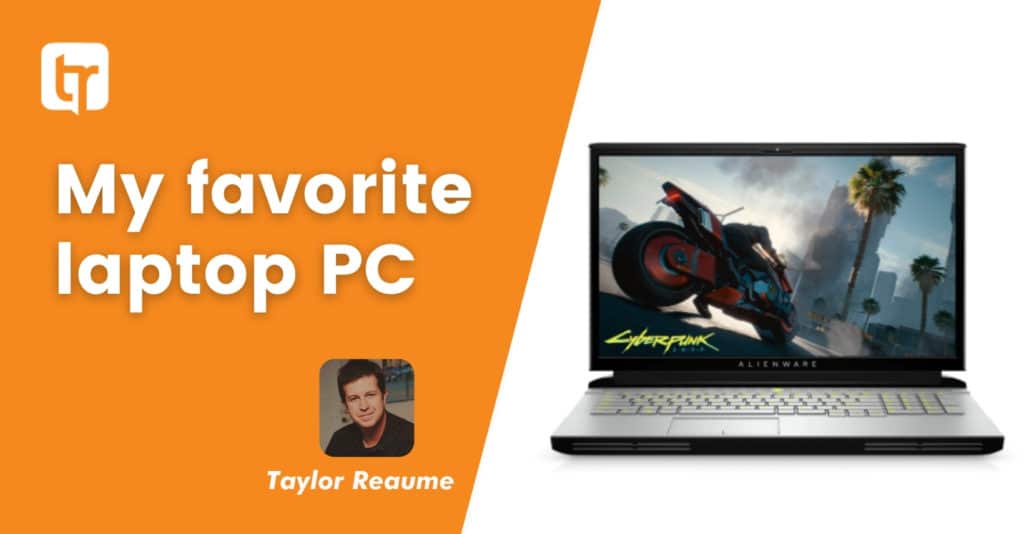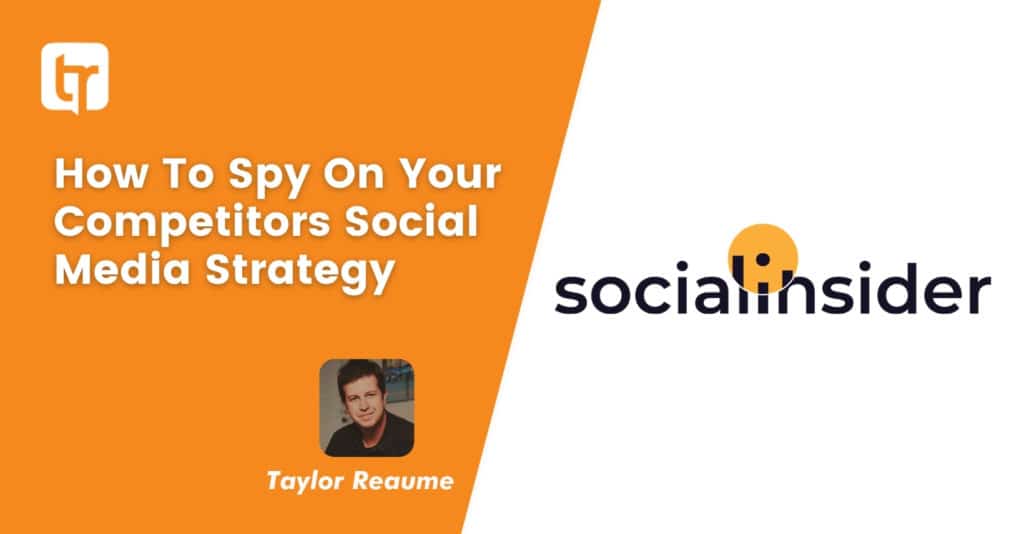My New Laptop Arrived Today – DELL ALIENWARE AREA-51M R2

“Taylor, which Laptop do you recommend?”
I get this question all the time. So I decided to write a blog and answer some of the reasons why I bought this laptop.
After researching for 2 solid nights and watching laptop comparison Youtubes, I finally made a decision to buy a Dell Alienware laptop.
In this blog, I am going to be talking about the magic of the Alienware Area-51M R2 Gaming laptop, and the reasons why I bought it.
To be clear, I am not a gamer. As an online marketer, I am on the computer all day long though and knew that if I wanted something with high-performance capabilities, a gaming laptop was the way to go.
I frequently have 100 tabs open on my PC, and I needed something that would support that, all the time.
Does Your Laptop PC Multi-Task?
Mine can. Like a beast!
When I started researching laptops and comparing the best ones, I quickly zero’d in on a few things in particular as deal breakers:
- How much RAM? Expandable?
- How much hard drive space? SSD?
- Backlit keyboard?
- SD Card Reader?
I needed something that could function quickly, and manage a significant amount of work open at the same time.
Is this a reputable laptop brand?
Dell is a solid brand, there are few brands that are more competitive than Dell, or that have been around for as long as Dell.
The Alienware brand has been around since 1996, a company founded by Michael Dell himself, along with Frank Azor, Arthur Lewis, and Joe Balerdi. I knew getting this model would be a good investment backed by brand longevity.
Is the Alienware Area-51M R2 expensive?
Yes, it can be expensive. It’s a higher end laptop, starting at around $2 thousand dollars. However, when I compared it to a few other brands it came in well under their sticker price. After turning it on and using it for a few days, I knew it was worth every penny.
Does the Alienware Area-51M look good?
This is a machine that I love to show off. The Area 51M has a stunning design, stylish at every corner. Its weight justifies its performance. At almost 10 pounds, you can feel that it has power. The first thing I noted was the heavier back end with an exhaust at the rear. It feels sturdy too. I’m not seeing any wobble here as you do with many laptops. When the laptop first boots, its touchpad feels light and I loved the feel of the tap.
The 17.3” display features Tobii Eye tracking technology that lets the screen recognize you as you are looking at it. It’s easy to see why this is touted as the “world’s most powerful and overclockable laptop.” The Alienware logo on display also is super cool.
Are there enough ports?
There are more ports than you will probably need, and two adapters to give it juice. You want to know if you can use your multimedia devices on this, especially if you are considering it for gaming. The answer is yes, it has a lot. It also includes a media card reader, 2 SODIMM memory slots, separate ports for headset and audio, 2 Gen 1 ports, and 1 Thunderbolt 3 port that supports USB 3.2 Gen 2 and DisplayPort 1.2. The Alienware Graphics Amplifier Port is a nice touch too.
To compare with others, USB 3.0 is a standard port, and I want a laptop with at least two of these. There are a lot of ports here to work with. Whatever peripheral you have, there’s a slot for that, even for your favorite gaming controller.
How does this laptop perform?
It’s an Intel Core i9 processor, which is the best in the world. You can’t just call a laptop the world’s most powerful, unless it actually is, or comes pretty close. With this price, I felt like I was getting the best of the best in performance. In both speed and durability, you can’t get better than a tenth Gen. 3.6-GHz Intel Core i9 processor and 64GB of Ram. Laptops with an i9 core processor are the largest and most powerful known to man. That’s where the sticker price is coming from.
The performance claims are real. I ran 60 open tabs on Google Chrome, used Twitter, streamed YouTube, and scrolled through some Netflix when test-driving the Area51M for the first time. When a machine is described as “overclockable,” the manufacturer is saying the CPU can run faster than the manufacturer intends. This claim stands up to the test.
Does the Alienware Area51-M R2 have good audio quality?
I’m not even a gamer, but this computer could turn me into one. For audio, you have the joy of front-firing speakers, and an AMD Radeon RTX 2080 graphics card ensures I am not missing a single thing when streaming, gaming, or working on this machine. The display is 360HZ FHD, and on the 17″ screen, makes looking at my work a beautiful thing.
The integrated 720p at 30fps HD camera and dual-array microphones give me everything I need for Zoom meetings and will keep multi-player gamers very happy.
Battery life with its 90 Wh lithium-ion battery is not my favorite feature. I’m only getting 2 and a half hours unplugged. Gamers are going to be okay with that, I walk around with my machine when I am working. Even so, that battery lifespan is longer than the Eon.
Alienware Area-51M Extras
The extras I’m looking for in a laptop, high performance or otherwise, are software packages and warranties. All of these are optional, but Windows 10, which was fine by me. I have the option for McAffee LiveSafe Consumer subscription, for 12 or 36 months, but I also had the option to decline McAffee. Accidental Damage Service is available for one to four years, or that could be declined as well.
The hardware warranty is a one-year warranty where I get the house call from the tech for in-home service, and that is a follow-up from a remote diagnosis.
Get this Laptop
Who am I to say this laptop has something wrong with it? It’s going to eventually. It’s a man-made product with a lifespan. That being said, it’s a powerful tool whose appearance alone suggests it plans on crushing it with the highest performance possible for as long as it can. And, with its warranty, tech support, and optional security features, it has everything I needed and stuff I didn’t even know I could get in a system.
If you’re in the market for a laptop, you can’t go wrong with Alienware Area-51M – it’s touted as the “world’s most powerful and overclockable” laptop because it can go faster than it says it can. It’s ideal for gamers and considered a gaming laptop, but I am not a gamer and love it.
I can run 60 different Windows at once, and stream from both YouTube and Netflix at the same time, and it doesn’t even offer the flicker of downtime. The specs it offers for a high-performance laptop are ideal for me and the workload I put on a machine.
I’ve reviewed it here as thoroughly as I can. This is a laptop that is fully loaded, with the best-in-class 3.6 GHz 10th Gen Intel core i9 processor.
Buying a laptop is never a easy. The research process can be time consuming. I hope these tips are helpful to you and best of luck with your next laptop purchase!




